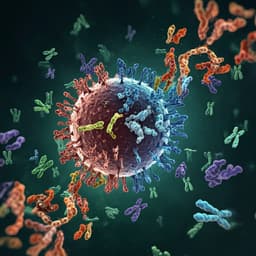
Medicine and Health
Vaccine effectiveness of CoronaVac against COVID-19 among children in Brazil during the Omicron period
P. T. V. Florentino, F. J. O. Alves, et al.
This study conducted by Pilar T. V. Florentino and colleagues reveals that the CoronaVac vaccine has a vaccine effectiveness of 39.8% against symptomatic COVID-19 infection and 59.2% against hospitalization in Brazilian children aged 6-11 during the Omicron period. Though offering some protection, the results indicate a low level against symptomatic infection and modest protection against severe illness.
~3 min • Beginner • English
Related Publications
Explore these studies to deepen your understanding of the subject.







